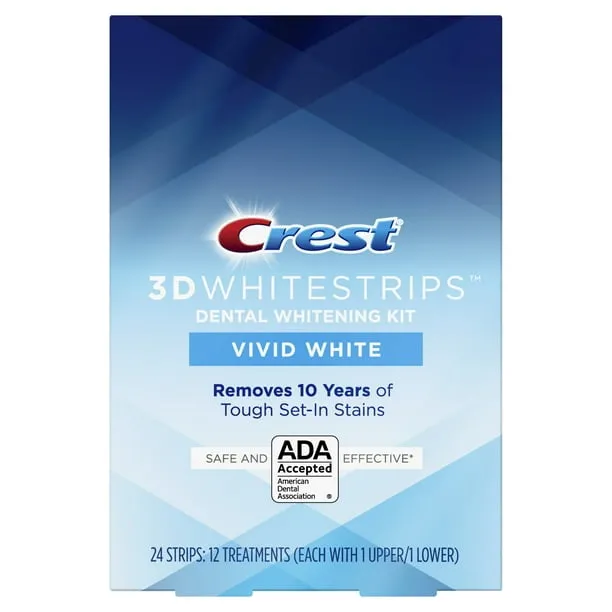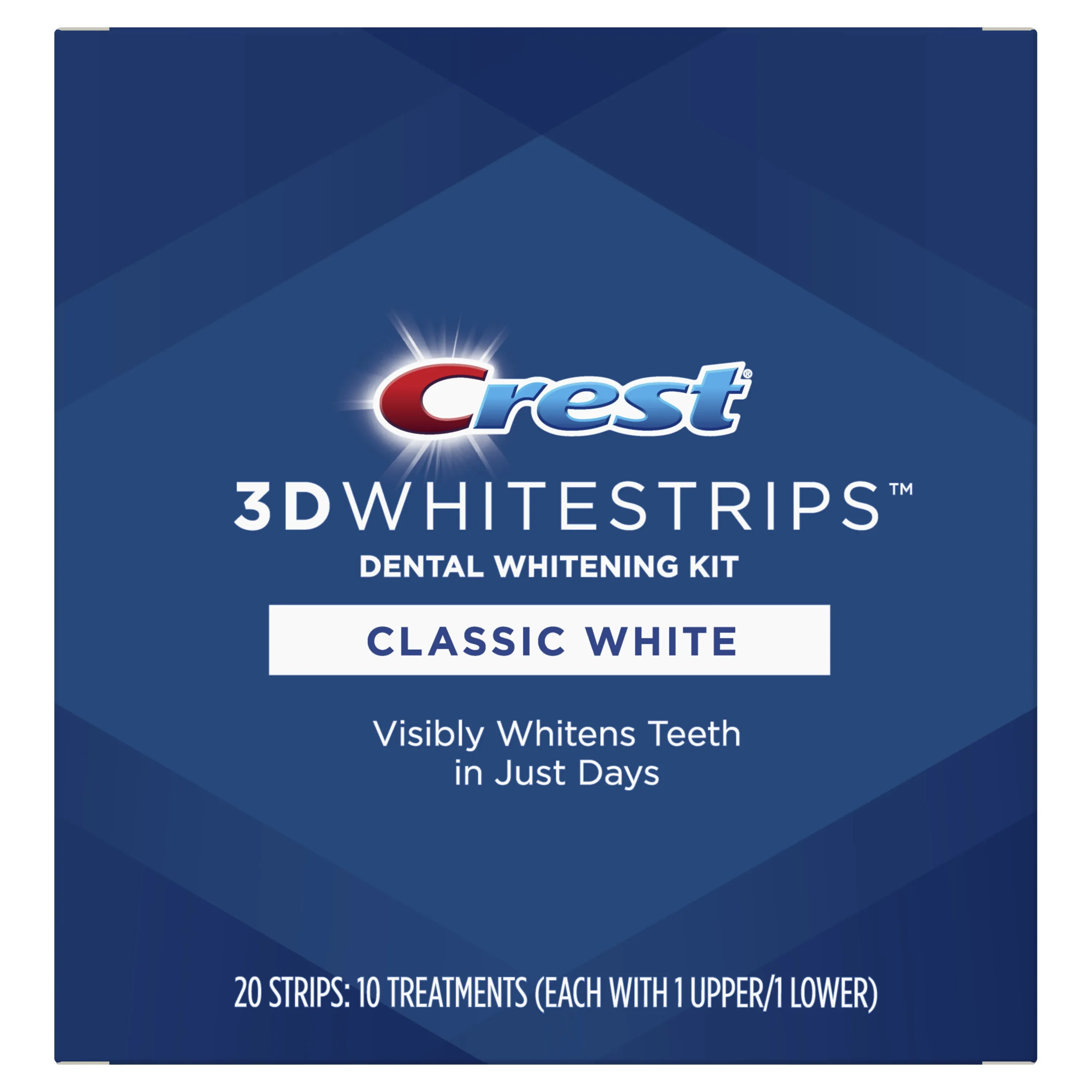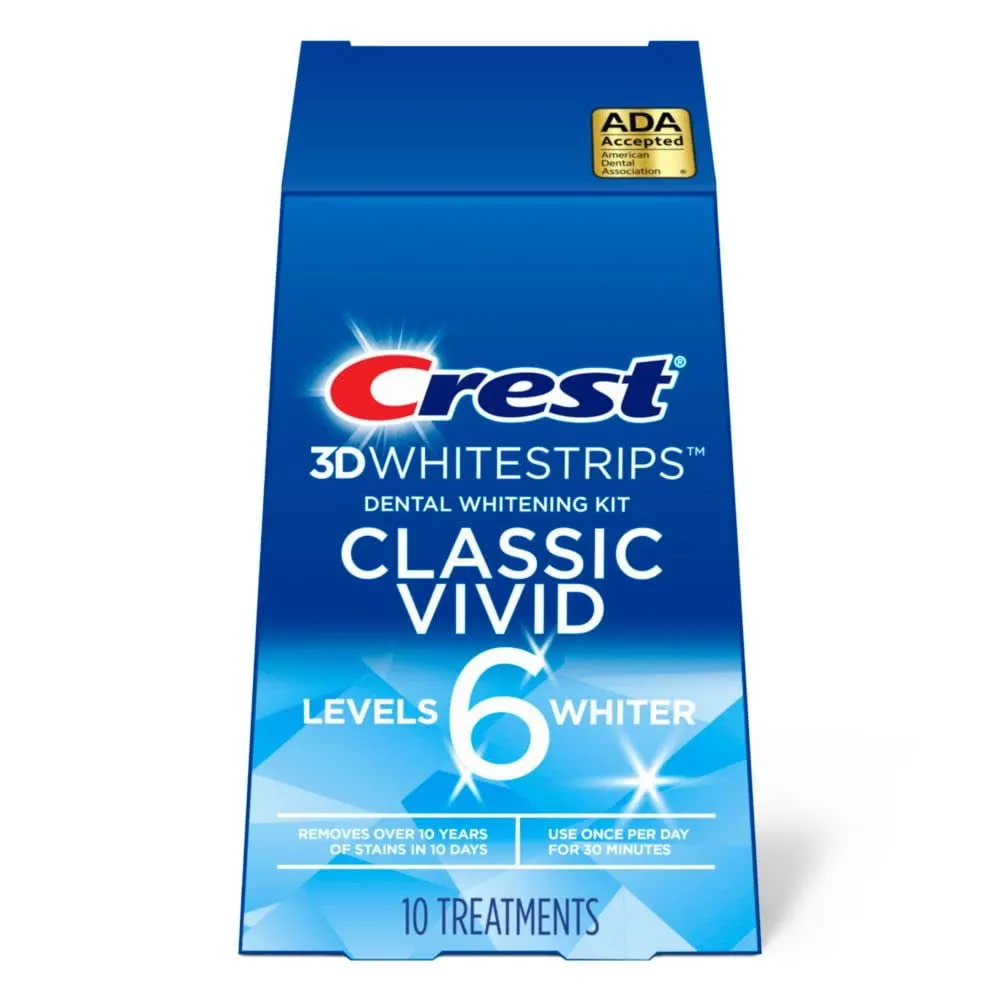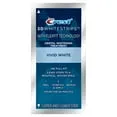Understanding Crest 3D White Strips
Crest 3D White Classic Vivid Teeth Whitening Strips, specifically the 24-count pack, offer a convenient and effective method for achieving a brighter, whiter smile from the comfort of your home. These strips are designed to remove surface stains and discoloration caused by everyday habits such as drinking coffee, tea, and wine, or even smoking. The active ingredient, usually hydrogen peroxide, penetrates the enamel to lift away stains, revealing a visibly whiter smile. The ‘Classic Vivid’ variant is known for its balance of effective whitening and enamel safety, making it a popular choice for those seeking noticeable results without excessive sensitivity. These strips are an accessible entry point into the world of professional-grade teeth whitening, offering a pathway to a more confident you with a brighter, more attractive smile.
How Crest Strips Work
Crest 3D White Strips utilize a sophisticated process to deliver their whitening power. The key component is the hydrogen peroxide gel, which is applied to a thin, flexible strip. When the strip is applied to the teeth, the hydrogen peroxide begins to break down, releasing oxygen molecules. These oxygen molecules penetrate the enamel and dentin, the porous layers of the tooth, where they react with the stain molecules. This chemical reaction breaks the bonds that hold the stain molecules together, effectively eliminating them and lightening the overall color of the teeth. The strips are designed to adhere securely to the teeth, ensuring that the whitening agent remains in contact with the tooth surfaces for the recommended time, maximizing effectiveness while minimizing potential for the gel to be washed away by saliva. The entire process is engineered for user-friendliness and efficiency, allowing individuals to whiten their teeth without professional dental assistance.
The Science Behind Whitening

The science behind teeth whitening with strips is rooted in the principles of oxidation-reduction reactions. Hydrogen peroxide acts as an oxidizing agent, meaning it facilitates the removal of electrons from stain molecules. These stain molecules are often large, complex organic compounds that absorb light, giving teeth a yellowish or brownish appearance. When hydrogen peroxide interacts with these molecules, it breaks them down into smaller, less light-absorbent compounds. This process reduces the concentration of chromophores (color-causing molecules) within the tooth enamel, making the teeth appear whiter. The concentration of hydrogen peroxide in Crest 3D White Strips is carefully calibrated to balance effectiveness with safety, minimizing the risk of enamel damage or excessive tooth sensitivity. Ongoing research continues to refine whitening technologies, seeking to enhance both the efficacy and the comfort of teeth whitening treatments.
Top 5 Tips for Using Crest 3D White Strips
Prep Your Teeth
Before applying Crest 3D White Strips, it’s beneficial to prepare your teeth for optimal results. Start by brushing your teeth gently to remove any food particles or plaque. However, it’s advisable to brush approximately 30 minutes before applying the strips, rather than immediately beforehand. This allows time for your saliva to re-establish its natural balance, ensuring that the strips adhere properly and that the whitening agent can effectively penetrate the enamel. Make sure your teeth are completely dry before applying the strips, as this will help them stick better. Preparing your teeth properly can enhance the overall effectiveness of the whitening process. You can also floss to ensure there is no debris in between your teeth, this will allow for the best results.
Apply the Strips Correctly

The application of Crest 3D White Strips is a crucial step in achieving a brighter smile. Carefully peel the strips from the backing, ensuring they do not fold over on themselves. Apply the longer strip to your upper teeth and the shorter one to your lower teeth, positioning them along the gumline. Gently press the strips against your teeth, ensuring they adhere properly and make full contact with the tooth surfaces. Fold any excess strip material behind the teeth for better coverage. Avoid touching the strips excessively, as this can diminish their effectiveness. Make sure to follow the instructions provided by Crest, usually indicating a specific application time, such as 30 minutes. Precise application and adherence to the recommended timing will help maximize the whitening results.
Maintain Consistency
Consistency is key when using Crest 3D White Strips. For optimal results, it’s important to adhere to the recommended treatment schedule. This usually involves using the strips once a day for the duration specified on the product packaging. Skipping applications or reducing the frequency can significantly affect the outcome, potentially leading to less noticeable whitening or a longer treatment period. Set a daily reminder to ensure you don’t miss any applications. If you happen to miss a day, simply resume the treatment the following day without doubling up on strips. Regular use of the strips, as instructed, will help you achieve and maintain the desired level of teeth whitening. Patience is vital, as noticeable results may take several days or weeks, depending on the initial shade of your teeth and the degree of staining.
Avoid Staining Foods and Drinks
To maximize the whitening effects of Crest 3D White Strips and prevent premature staining, it’s advisable to avoid or limit the consumption of staining foods and drinks, especially during the treatment period. This includes coffee, tea, red wine, dark sodas, and heavily pigmented foods like berries, soy sauce, and curries. These items can deposit color pigments onto the newly whitened enamel, reversing the whitening effects or creating uneven results. Consider using a straw for beverages to minimize contact with your teeth. Rinse your mouth with water after consuming potentially staining foods or drinks, and brush your teeth approximately 30 minutes after eating. Maintaining a diet that minimizes stain-causing substances will significantly contribute to the longevity and effectiveness of your teeth whitening treatment, helping you maintain your brighter smile for longer.
Consider Sensitivity

Tooth sensitivity is a common side effect of teeth whitening treatments, and Crest 3D White Strips are no exception. If you experience sensitivity, there are several strategies to manage it. First, consider reducing the frequency of strip applications or shortening the application time. Use a toothpaste designed for sensitive teeth, which contains ingredients like potassium nitrate to help desensitize the nerves. You may also try applying the strips every other day instead of daily. Avoid extremely hot or cold foods and drinks that can exacerbate sensitivity. Consult with your dentist if the sensitivity is severe or persists. They might recommend fluoride treatments or other professional solutions to help alleviate the discomfort. Being proactive about sensitivity management will allow you to continue your whitening treatment with greater comfort and without compromising your results.
Maximizing Results & Avoiding Issues
Proper Application and Placement
Ensuring proper application and placement is fundamental for achieving the best possible outcomes with Crest 3D White Strips. The strips should be applied to clean, dry teeth, making sure they fully cover the visible surfaces. The longer strip is typically used for the upper teeth, and the shorter one is used for the lower teeth. Position the strips along the gumline, pressing them gently to ensure they adhere firmly to the teeth. It’s essential to avoid overlapping the strips onto the gums, as this can lead to irritation or sensitivity. Make sure there are no gaps between the strips and the teeth, as this can result in uneven whitening. Folding any excess strip material behind the teeth can enhance contact with the back surfaces. Consistent and careful application, following the product instructions, is crucial for maximizing the effectiveness of the treatment and minimizing potential side effects, ensuring a brighter and more uniform smile.
Addressing Common Issues

Common issues encountered when using Crest 3D White Strips include tooth sensitivity and uneven whitening. To address sensitivity, use a toothpaste formulated for sensitive teeth. Reduce the frequency of strip use or shorten the application time if necessary. For uneven whitening, ensure proper application and placement of the strips. Avoid over-applying the strips, as this can lead to inconsistent results. If you notice any spots, you may need to use the strips more consistently in those areas, or consult your dentist. For persistent issues, seek professional advice from your dentist, who can assess your oral health and suggest alternative or supplementary treatments. Your dentist can also provide insights on how to best manage sensitivity and optimize the overall whitening process, ensuring you achieve the best possible results with minimal discomfort.
Maintaining Your White Smile
Post-Whitening Care
After completing your teeth whitening treatment with Crest 3D White Strips, proper post-whitening care is essential for maintaining your brighter smile. Avoid staining foods and drinks for at least a week or two after the final application, as your teeth are more susceptible to staining during this period. Continue to practice good oral hygiene, including brushing your teeth twice daily with a fluoride toothpaste and flossing daily. If you experience any sensitivity, use a toothpaste specifically designed for sensitive teeth. Consider using a whitening toothpaste to help maintain the results. Schedule regular dental check-ups and cleanings to keep your teeth healthy and clean. By taking these steps, you can extend the life of your whitening results and enjoy your radiant smile for a longer period.
Long-Term Smile Care

Long-term smile care involves a consistent and comprehensive approach to oral hygiene and lifestyle habits. Continue regular brushing and flossing to prevent staining and maintain overall oral health. Consider using a whitening toothpaste as part of your daily routine. Avoid or limit the consumption of staining substances like coffee, tea, red wine, and tobacco products. If you indulge in these, rinse your mouth or brush your teeth promptly afterward. Schedule professional dental cleanings and check-ups every six months to remove any surface stains and address any dental issues early on. Consider periodic touch-up whitening treatments, either at home or with your dentist, to maintain your desired level of whiteness. Maintaining good oral health, coupled with these lifestyle choices, will contribute to a consistently bright and healthy smile for years to come.
